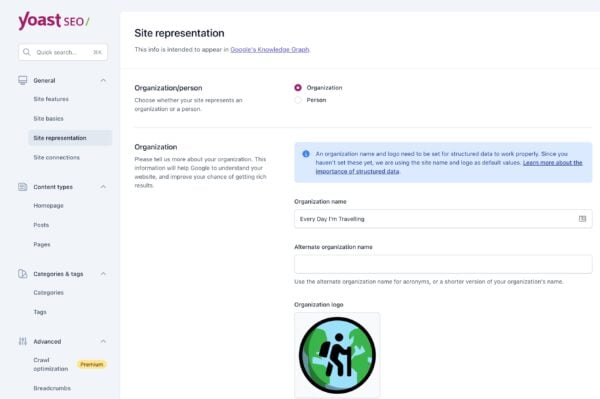To optimize your site for audiences in several countries or language regions, you’ll need to optimize your content and your technical setup. Let’s start with the content aspects of international SEO.
Doing targeted keyword research and writing fresh content for each audience is crucial. Take items of clothing, for example. An American vest is an entirely different garment from a British vest, a Dutch vest, a French vest, or a Spanish vest… you get the point. We don’t recommend using automated translations. Invest time and resources in proper research and translations to optimize your keywords and copy.
Another important aspect of international SEO is picking the proper domain structure. Generally, a different ccTLD (e.g., www.yoast.de) for every variation is only a good option for huge companies with big budgets. In most cases, subdirectories (e.g., www.yoast.com/de) are the way to go.
Search engines want to display the correct language version of your
site to each visitor, whatever country they’re from. To help them, you
need to implement hreflang. hreflang
is code that tells the search engines what language variations of a page
are available and helps prevent duplicate content problems. It’s quite a
complex piece of code, but our hreflang guide helps you along the way — or you can take our Multilingual SEO training. This course is part of our Yoast SEO academy that’s free with a Yoast SEO Premium subscription.
2.7. Add Schema.org structured data
Structured data is kind of like a dictionary for search engines. By describing your content in code, you can instantly clarify that particular piece of content. Plus, you can tell who wrote it, who published it, and when on what site. Also, if this article featured recipe, FAQ, or how-to content, you could let search engines know about this. This way, search engines get a better understanding of your site. They can use this to help your site get rich results.
Structured data is essential for WordPress SEO. It used to be hard to add structured data to your site, but we set out to make it easy with structured data in Yoast SEO. Today, we generate the code search engines need to automatically make sense of your site and its connections. You only need to make a couple of choices in Yoast SEO > Site Representation. Select Person if your site is a personal site or Organization if it is a business or professional site. Don’t forget to pick or upload the correct logo or avatar.
That’s not all: you can also quickly build specific types of content pages with our structured data blocks. These blocks work in the block editor, and at the moment, we have two types: FAQs and how-tos. These blocks help you visually build the content while generating valid structured data in the background. Plus, the Schema controls allow you to specify what type of page the one you’re working on. So, you can quickly add structured data to your contact page by picking that specific type.


No comments:
Post a Comment